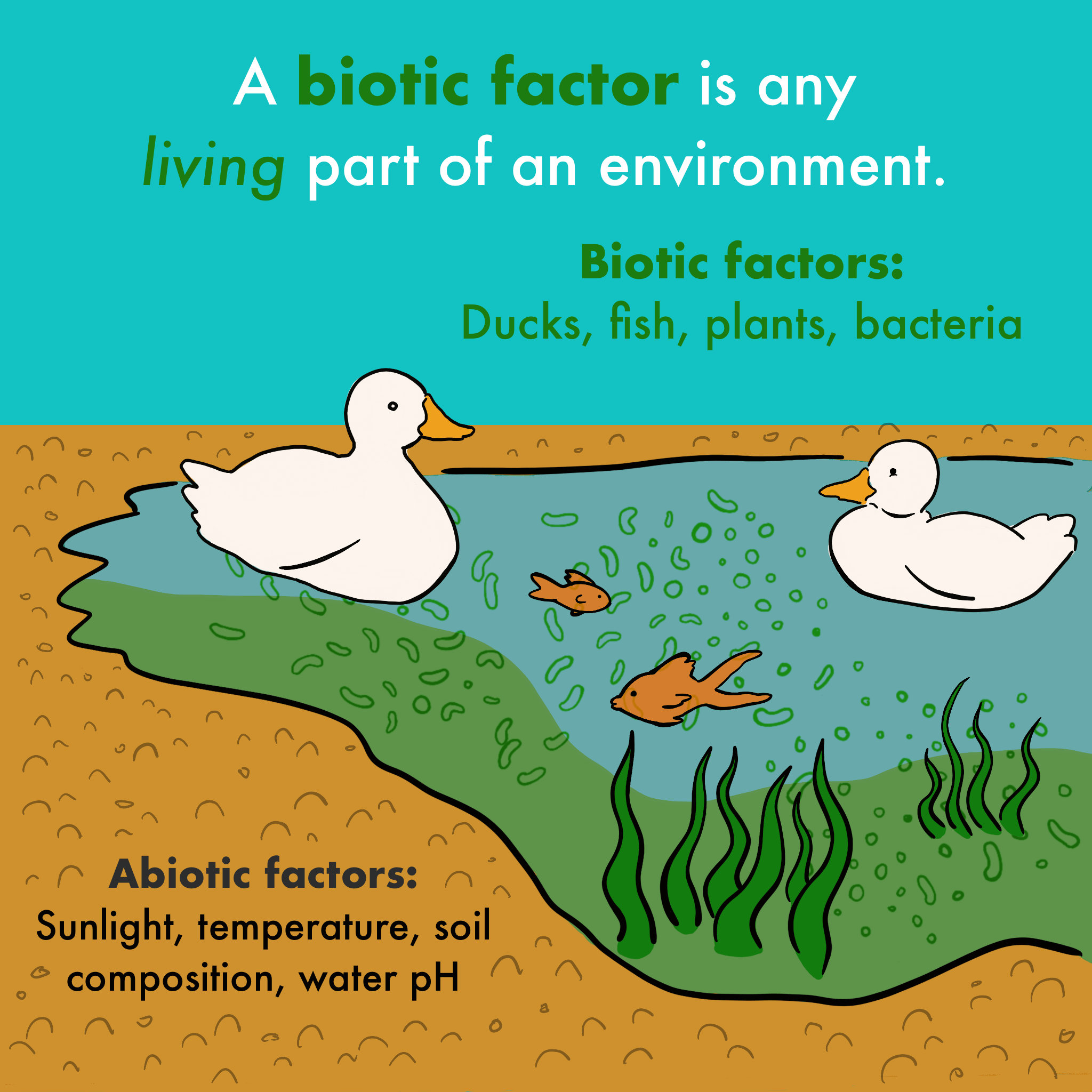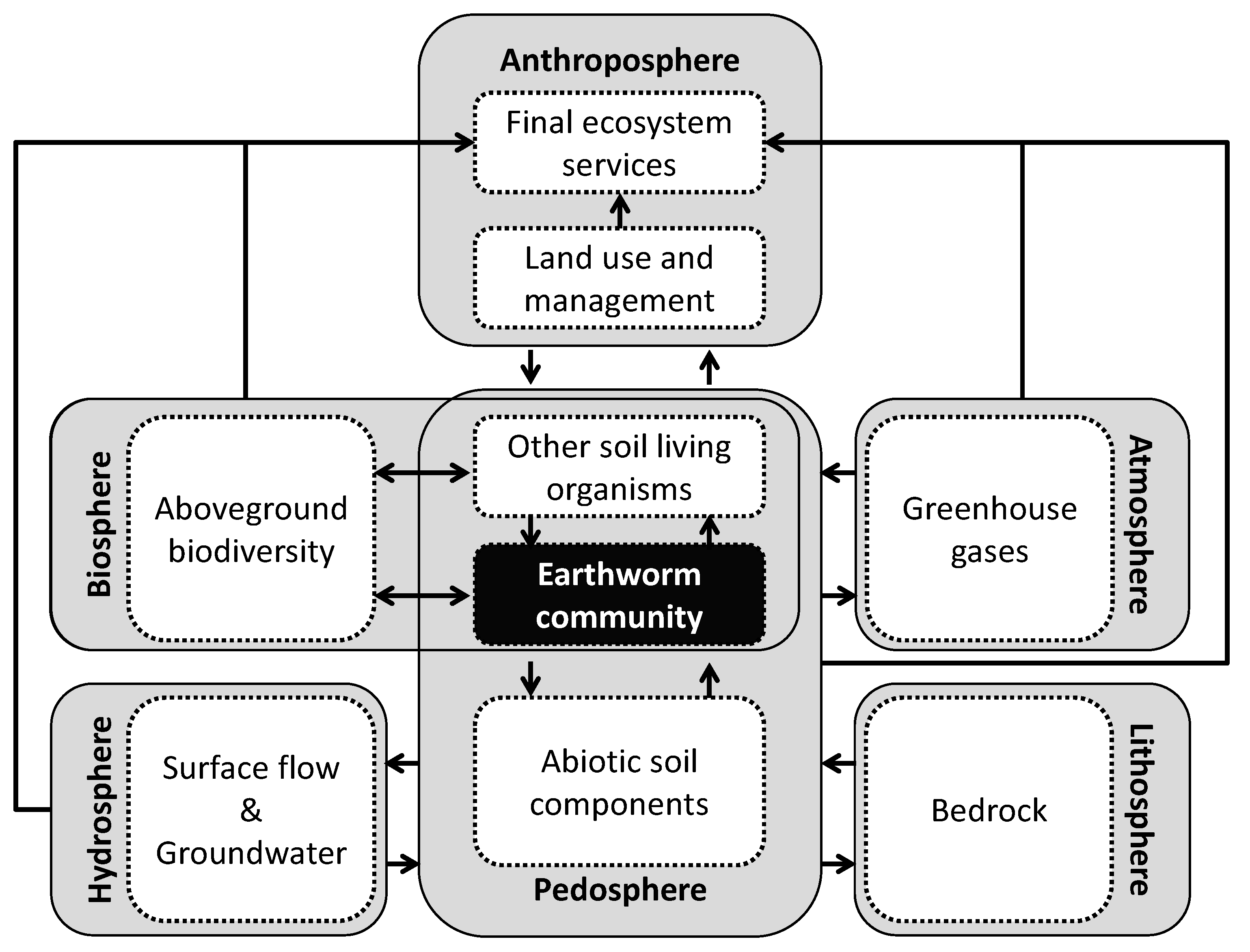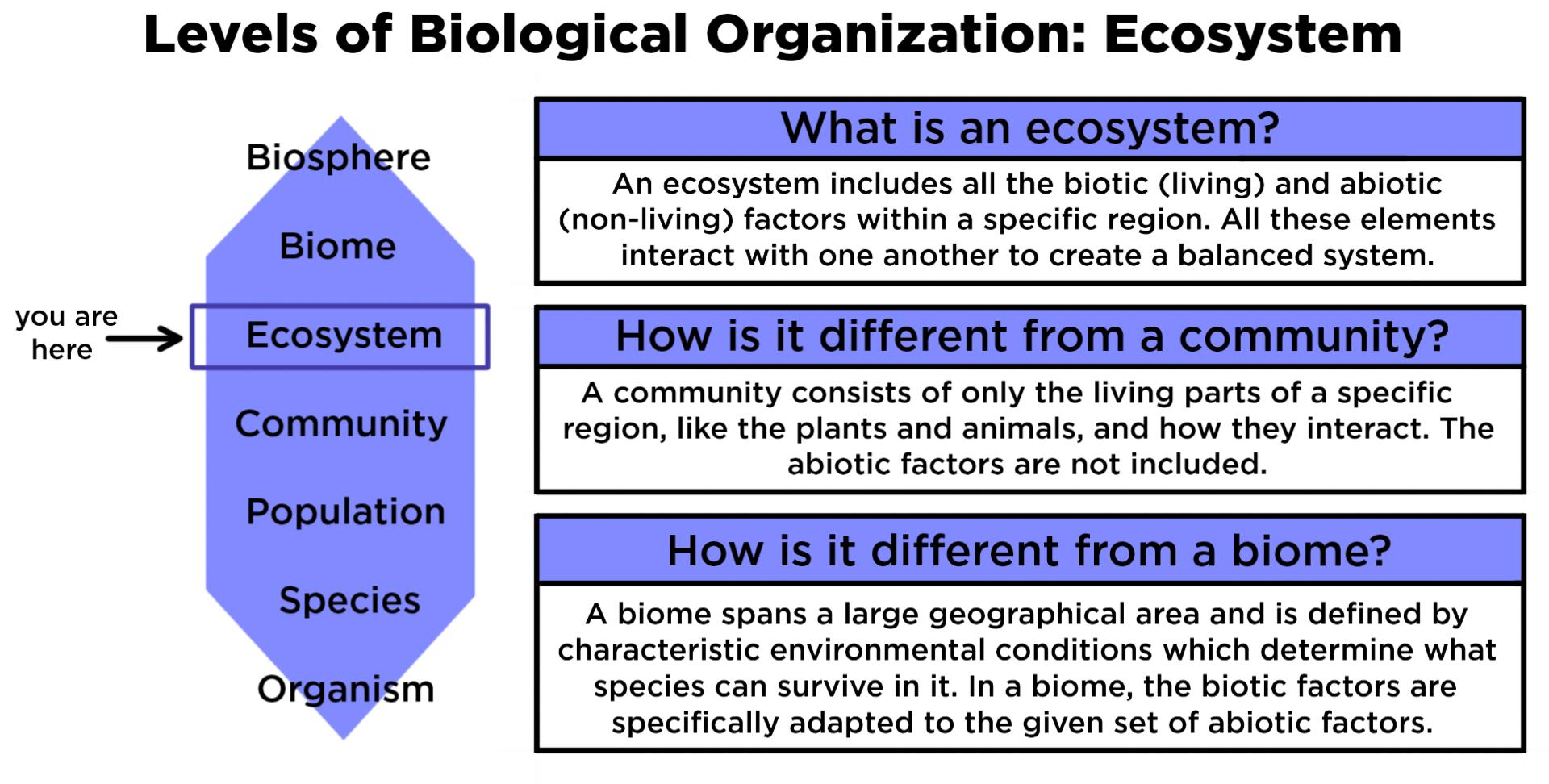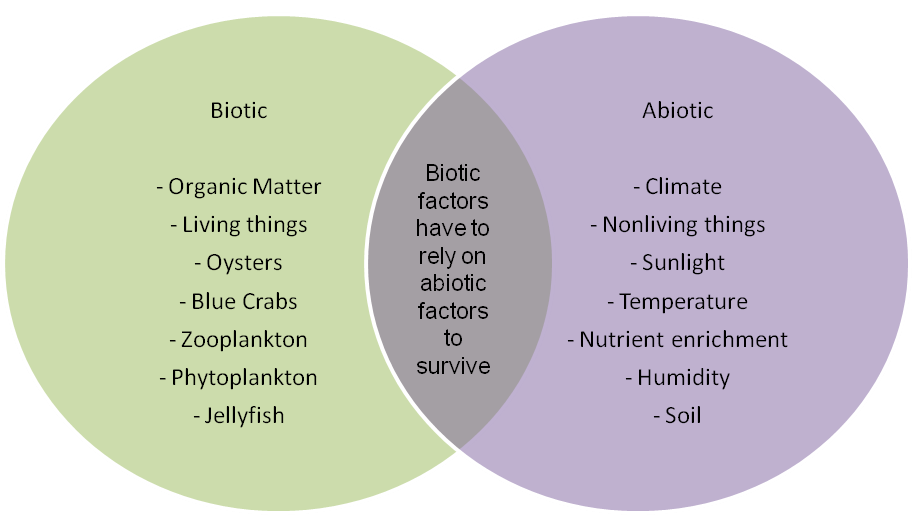Topic abiotic part of an ecosystem: Explore the abiotic part of an ecosystem, the crucial non-living elements, from sunlight to soil, that underpin and influence the dynamics of our natural world.
Table of Content
- What are examples of abiotic parts of an ecosystem?
- Overview of Abiotic Factors
- Importance of Abiotic Factors in Ecosystems
- Types of Abiotic Factors
- Role of Water and Hydrological Cycle
- Soil Composition and Texture
- Light and Photosynthesis
- YOUTUBE: Abiotic Factors in Ecosystems: Water
- Temperature Effects on Ecosystems
- Atmospheric Gases and Their Impact
- Wind and Its Ecological Implications
- Minerals and Nutrient Cycling
- Human Impact on Abiotic Factors
- Adaptations to Abiotic Conditions
- Monitoring and Managing Abiotic Factors
What are examples of abiotic parts of an ecosystem?
Examples of abiotic parts of an ecosystem include:
- Temperature: The average temperature of an ecosystem can greatly impact the organisms living there. Different species have varying temperature tolerances, so temperature plays a crucial role in determining the distribution and abundance of organisms.
- Light: The amount of sunlight available in an ecosystem affects photosynthesis, which is the process by which plants convert sunlight into energy. Light availability also influences the behavior, reproduction, and migration of many organisms.
- Water: The presence of water and its availability, whether in the form of rivers, lakes, or precipitation, is vital for the survival of many organisms. Water availability affects the distribution and abundance of species in an ecosystem.
- Soil composition: The type and characteristics of soil in an ecosystem determine its fertility and nutrient content. Different plants have specific soil requirements, so soil composition influences the types of plants and organisms that can thrive in an area.
- Air composition: The composition of the air, including the levels of oxygen, carbon dioxide, and other gases, is essential for the respiration and survival of organisms. Changes in air composition, such as increased pollution levels, can have detrimental effects on ecosystems.
- Wind: The movement of air currents, or wind, can impact the dispersal of seeds and spores, the distribution of organisms, and the shape of vegetation. Wind also affects the exposure to air temperature and evaporation rates.
- Topography: The physical features of the land, such as mountains, valleys, and slopes, influence the flow of water, temperature patterns, and the availability of sunlight. These aspects, in turn, affect the distribution and diversity of organisms.
These examples highlight the importance of abiotic factors in shaping ecosystems and influencing the interactions between organisms and their environment.
READ MORE:
Overview of Abiotic Factors
Abiotic factors constitute the non-living components of an ecosystem that significantly influence the environment and the organisms within it. These factors include a wide range of physical and chemical elements such as sunlight, temperature, water, atmospheric gases, wind, soil, and minerals. Each of these elements plays a critical role in shaping ecosystems by determining the types of species that can survive, their rates of survival, growth, and reproduction, as well as the overall structure and function of the ecosystem.
- Sunlight is essential for photosynthesis and influences climate and temperature regulation.
- Temperature affects metabolic rates of organisms and vegetation distribution.
- Water availability is crucial for life, influencing species distribution and ecosystem productivity.
- Atmospheric gases, including oxygen, carbon dioxide, and nitrogen, are vital for respiration, photosynthesis, and other life processes.
- Soil types determine the variety of plants that can grow, affecting the animals that rely on them for food.
- Wind can influence plant growth, seed dispersal, and temperature regulation.
- Minerals in the soil are necessary for plant nutrition, which in turn supports a variety of animal life.
Understanding abiotic factors is crucial for conservation efforts, as these elements directly impact biodiversity, ecosystem health, and the services ecosystems provide to humanity.

Importance of Abiotic Factors in Ecosystems
Abiotic factors play a foundational role in ecosystems, shaping the habitat and influencing the life processes of all organisms. These non-living elements not only create the conditions for life but also govern the distribution, behavior, and survival of species. The balance and interaction between abiotic factors and living organisms are crucial for ecosystem health and stability.
- Regulation of Biological Processes: Factors such as temperature and sunlight directly affect photosynthesis, respiration, and other vital biological processes.
- Shaping Ecosystems: The physical landscape, soil composition, and availability of water define the structure of ecosystems, influencing the types of species that can thrive in those environments.
- Species Distribution: Variations in abiotic factors like climate and terrain influence where plants and animals can live, leading to the diverse ecosystems found around the world.
- Environmental Challenges: Understanding abiotic factors is key to addressing environmental challenges such as climate change, habitat destruction, and pollution, which can significantly alter these foundational elements.
- Biodiversity Support: The diversity of abiotic conditions supports a wide range of habitats, contributing to biodiversity by providing various niches for different organisms.
The interplay between abiotic factors and biotic components—such as plants, animals, and microorganisms—is integral to the study of ecology. It helps us understand the delicate balance necessary for ecosystem sustainability and guides conservation and management efforts to preserve our natural world.
Types of Abiotic Factors
Abiotic factors, the non-living components of ecosystems, play a pivotal role in the environment. They can be broadly categorized into climatic factors, edaphic (soil-related) factors, and physical and chemical factors. Each category encompasses a range of elements that directly or indirectly affect the living organisms within an ecosystem.
- Climatic Factors: These include sunlight, temperature, atmospheric precipitation (rain, snow), humidity, wind speed, and atmospheric gases. They are primarily responsible for creating the overall climate and weather patterns of an area.
- Edaphic Factors: Related to soil, these factors cover soil pH, soil texture (clay, sand, silt), mineral content, organic matter, and soil water. They influence the types of vegetation that can grow, which in turn affects the animals that live in the area.
- Physical and Chemical Factors: This category includes water availability, water salinity, water pH, and the concentration of gases such as oxygen and carbon dioxide in the water and atmosphere. These factors are crucial for aquatic ecosystems and for the respiration and photosynthesis processes of terrestrial organisms.
Understanding these abiotic factors is essential for studying how ecosystems function, how they are structured, and how they respond to changes. This knowledge is also vital for environmental conservation, helping to predict the impacts of human activity on natural habitats and guiding efforts to mitigate such impacts.

Role of Water and Hydrological Cycle
Water is a fundamental abiotic factor within ecosystems, serving as a critical component for life. The hydrological cycle, encompassing the movement and distribution of water in its various forms, plays a key role in shaping ecosystems, influencing climate patterns, and supporting a wide range of biological processes.
- Supports Life: Water is essential for all living organisms, involved in physiological processes such as digestion, respiration, and photosynthesis.
- Shapes Ecosystems: The availability of water influences the type of vegetation and animal life in an area. Wetlands, deserts, forests, and grasslands are all defined by their water availability.
- Regulates Climate: Through evaporation and precipitation, the hydrological cycle has a profound effect on weather and climate conditions, affecting temperature and humidity levels.
- Transports Nutrients: Water cycles nutrients through ecosystems, from the soil to plants and animals, and back into the soil, supporting the food web.
- Facilitates Erosion and Deposition: Moving water shapes the physical landscape, eroding rocks and soil, and depositing them in new areas, creating rivers, valleys, and deltas.
The hydrological cycle is a connective process that not only cycles water through the environment but also integrates ecosystems globally. It is impacted by human activities such as deforestation, urban development, and pollution, which can disrupt water availability and quality, demonstrating the importance of sustainable water management practices.
Soil Composition and Texture
Soil composition and texture are crucial abiotic factors that significantly impact ecosystem dynamics, plant growth, and biodiversity. Soil is a complex mixture of minerals, organic matter, water, and air, with its texture defined by the proportion of sand, silt, and clay particles. These elements determine soil"s physical and chemical properties, influencing water retention, nutrient availability, and aeration, which are vital for plant health.
- Mineral Content: Provides essential nutrients like nitrogen, phosphorus, and potassium necessary for plant growth.
- Organic Matter: Decomposed material from plants and animals enriches the soil with nutrients, improves its structure, and enhances moisture retention.
- Water Retention: Clay soils retain more water due to their fine texture, while sandy soils drain quickly because of larger particle sizes.
- Aeration: The ability of soil to allow air to circulate through it, which is crucial for root respiration and the prevention of root diseases.
- pH Level: Affects the solubility of nutrients; different plants require different pH levels to access the nutrients in the soil.
Understanding soil composition and texture is essential for effective land management, agriculture, and conservation efforts. It enables the selection of appropriate plant species for habitat restoration, agricultural productivity, and the maintenance of healthy ecosystems.

Light and Photosynthesis
Soil composition and texture are crucial abiotic factors that significantly impact ecosystem dynamics, plant growth, and biodiversity. Soil is a complex mixture of minerals, organic matter, water, and air, with its texture defined by the proportion of sand, silt, and clay particles. These elements determine soil"s physical and chemical properties, influencing water retention, nutrient availability, and aeration, which are vital for plant health.
- Mineral Content: Provides essential nutrients like nitrogen, phosphorus, and potassium necessary for plant growth.
- Organic Matter: Decomposed material from plants and animals enriches the soil with nutrients, improves its structure, and enhances moisture retention.
- Water Retention: Clay soils retain more water due to their fine texture, while sandy soils drain quickly because of larger particle sizes.
- Aeration: The ability of soil to allow air to circulate through it, which is crucial for root respiration and the prevention of root diseases.
- pH Level: Affects the solubility of nutrients; different plants require different pH levels to access the nutrients in the soil.
Understanding soil composition and texture is essential for effective land management, agriculture, and conservation efforts. It enables the selection of appropriate plant species for habitat restoration, agricultural productivity, and the maintenance of healthy ecosystems.
Abiotic Factors in Ecosystems: Water
Dive into the fascinating realm of water abiotic and uncover the secrets hidden beneath its surface. Discover the crucial role played by water in sustaining life and its impact on our planet\'s ecosystems through this incredible video.
Abiotic Factors in Ecosystems: Water
Dive into the fascinating realm of water abiotic and uncover the secrets hidden beneath its surface. Discover the crucial role played by water in sustaining life and its impact on our planet\'s ecosystems through this incredible video.
Temperature Effects on Ecosystems
Temperature is a critical abiotic factor that significantly influences ecosystems. It affects the distribution, behavior, and physiology of living organisms. Temperature variations can lead to different ecosystems and influence the biodiversity within them. For example, tropical regions support dense forests with high biodiversity, while polar regions have much less diverse ecosystems.
- Regulation of Biological Processes: Temperature controls the rate of metabolic processes in organisms. Warmer temperatures generally increase the rate of these processes, while colder temperatures reduce them. This is crucial for the growth, reproduction, and survival of species.
- Seasonal Changes: Seasonal temperature changes trigger migration, hibernation, and breeding cycles in various species. These adaptations are essential for the survival of species in changing climates.
- Habitat Distribution: Temperature influences the distribution of habitats by determining the climate of a region. Different temperatures support different types of vegetation and, consequently, the animals that can live in those habitats.
- Thermal Stress: Extreme temperatures can cause thermal stress to organisms, leading to a decline in population sizes or even extinction in severe cases. Organisms have specific temperature ranges for optimal growth, and deviations can be detrimental.
Moreover, global warming is altering temperature patterns worldwide, affecting ecosystems and their inhabitants. Rising temperatures can shift the geographic ranges of many species, disrupt timing of natural events such as flowering and migrations, and increase the frequency of extreme weather events.
In conclusion, temperature plays a pivotal role in shaping ecosystems. It is essential for the development, distribution, and adaptation of living organisms. Understanding the effects of temperature on ecosystems is crucial for conservation efforts and predicting the impacts of climate change.

Atmospheric Gases and Their Impact
Atmospheric gases, including oxygen, carbon dioxide, nitrogen, and others, play a fundamental role in shaping ecosystems. They are vital for various processes that support life, influence climate patterns, and contribute to the overall functioning of the biosphere.
- Oxygen (O2): Essential for respiration in most living organisms, oxygen availability can affect species distribution and ecosystem productivity.
- Carbon Dioxide (CO2): A key component in photosynthesis, carbon dioxide levels influence plant growth, which in turn supports entire food webs. Elevated CO2 levels due to human activities are impacting climate regulation and ecosystems globally.
- Nitrogen (N2): Although abundant in the atmosphere, nitrogen must be fixed into a usable form for most organisms. This process supports the growth of plants and, by extension, entire ecosystems.
- Methane (CH4): A potent greenhouse gas with significant effects on climate. Natural wetlands are a major source of methane, but human activities have dramatically increased its concentration, affecting climate and ecosystems.
These gases also contribute to the greenhouse effect, which is crucial for maintaining the Earth"s temperature but is currently being enhanced by human emissions, leading to climate change. This change is altering habitats, shifting species distributions, and impacting the timing of ecological events.
Understanding the roles and impacts of atmospheric gases is crucial for conservation efforts and to mitigate human-induced changes. It emphasizes the interconnectedness of abiotic factors and the living components of ecosystems, underlining the importance of maintaining a balanced atmosphere for the health of our planet.
Wind and Its Ecological Implications
Wind plays a significant role in ecosystems by affecting climatic conditions, plant distribution, and animal behavior. Its impact on abiotic and biotic components demonstrates the interconnectedness of natural systems.
- Seed and Pollen Dispersal: Wind aids in the dispersal of seeds and pollen, facilitating plant reproduction and the spread of various plant species across landscapes. This dispersal mechanism is crucial for the colonization of new areas and the maintenance of biodiversity.
- Soil Erosion: Wind can cause soil erosion, removing topsoil and nutrients essential for plant growth. However, it also contributes to soil formation and redistribution, affecting soil composition and texture in different regions.
- Microclimate Regulation: By influencing evaporation and transpiration rates, wind plays a role in regulating microclimates. This can affect water availability for plants and animals, impacting local ecosystems.
- Plant Morphology: Constant wind exposure can influence plant growth patterns, leading to adaptations such as shorter heights, thicker cuticles, and more robust root systems. These adaptations help plants withstand the physical stress of windy conditions.
- Animal Behavior: Wind affects animal behavior, including migration patterns, hunting strategies, and habitat selection. Animals may seek sheltered areas to avoid the cooling effects of wind or use wind currents for migration.
Additionally, wind energy is a renewable resource that has ecological implications. Wind turbines can impact wildlife, particularly birds and bats, through habitat disruption and collision risks. However, with proper planning and technology, the ecological impacts of wind energy can be minimized, contributing to sustainable energy production while preserving ecosystem integrity.
In conclusion, wind is a powerful abiotic factor with significant ecological implications. Understanding its effects is essential for ecosystem management, conservation efforts, and the development of sustainable practices that harmonize with the natural environment.

Minerals and Nutrient Cycling
Minerals and nutrient cycling are fundamental processes within ecosystems, playing a pivotal role in supporting life by recycling essential elements. These cycles involve the movement of nutrients from the abiotic components of the environment—such as water, soil, and air—to the biotic components, including plants and animals, and back again. This cycling is crucial for the productivity and sustainability of ecosystems.
- Nitrogen Cycle: Involves the conversion of nitrogen between its various chemical forms. This cycle is vital for creating usable forms of nitrogen that plants can absorb as nutrients. Bacteria in the soil play a crucial role by fixing atmospheric nitrogen into forms that plants can use.
- Carbon Cycle: Describes the movement of carbon dioxide between the atmosphere, oceans, soil, and living organisms. Photosynthesis by plants and algae captures carbon dioxide, which is then used in the formation of organic matter that feeds into the food web.
- Phosphorus Cycle: Unlike nitrogen and carbon, phosphorus does not have a gaseous phase under Earth"s normal atmospheric conditions. It cycles through the soil, water, and living organisms, and is essential for cell function and growth.
- Water Cycle: Water moves between the Earth"s surface and the atmosphere through evaporation, condensation, precipitation, and runoff. This cycle is crucial for transporting nutrients and supporting life in different ecosystems.
Minerals such as potassium, calcium, and magnesium are also cycled through ecosystems, providing essential nutrients that support plant growth and, consequently, the entire food web. The availability of these minerals in the soil affects plant diversity and productivity.
The disruption of these cycles, often due to human activities such as agriculture, deforestation, and pollution, can lead to nutrient imbalances, reducing ecosystem resilience and productivity. Therefore, understanding and preserving the integrity of mineral and nutrient cycles is essential for maintaining ecosystem health and biodiversity.
Human Impact on Abiotic Factors
Human activities have profoundly impacted abiotic factors, which include non-living components like water, air, soil, and climate, essential for ecosystem functioning. Understanding these impacts is crucial for mitigating negative consequences and promoting sustainable practices.
- Climate Change: Emissions of greenhouse gases from industrial activities, deforestation, and transportation have led to global warming, altering weather patterns, and increasing the frequency of extreme weather events. These changes affect ecosystems by shifting habitat ranges, altering species distributions, and impacting water resources.
- Pollution: Pollution from chemicals, plastics, and other wastes has contaminated air, water, and soil. Acid rain, resulting from air pollution, can drastically alter soil chemistry and water quality, negatively affecting plant and aquatic life.
- Land Use Changes: Urbanization, agriculture, and deforestation have transformed the landscape, reducing natural habitats, and altering the balance of abiotic factors like soil composition and local climate conditions.
- Water Management: Dams, irrigation systems, and water extraction for human use have altered the natural flow of rivers and distribution of water resources, impacting aquatic ecosystems and the availability of water for native plants and animals.
- Soil Degradation: Intensive farming practices, overgrazing, and deforestation have led to soil erosion, loss of fertility, and desertification, reducing the soil"s ability to support plant life and store carbon.
These human-induced changes underscore the interconnectedness of abiotic factors and the importance of adopting sustainable practices to minimize environmental impact. Efforts such as reducing emissions, conserving natural habitats, sustainable agriculture, and pollution control are vital for preserving ecosystem integrity and ensuring the well-being of future generations.

Adaptations to Abiotic Conditions
Adaptations to abiotic conditions are evolutionary responses by organisms to cope with the non-living elements of their environment, such as temperature, light, water availability, and soil composition. These adaptations enable species to survive and reproduce in their specific habitats, demonstrating the resilience and versatility of life in the face of environmental challenges.
- Temperature Adaptations: Organisms adapt to temperature extremes through behavioral, physiological, and structural adaptations. For example, desert animals may be nocturnal to avoid daytime heat, while Arctic animals have insulating layers of fat and fur to retain warmth.
- Water Availability: Plants in arid environments may develop deep root systems to access water or store water in their leaves. Animals might develop behaviors or physical traits that minimize water loss, such as the production of highly concentrated urine.
- Light Adaptations: In dense forests, plants have adapted to low light conditions by developing larger leaves. Conversely, plants in areas with abundant sunlight may have smaller leaves with protective waxy coatings to reduce water loss.
- Soil Composition: Plants may adapt to poor soil conditions by forming symbiotic relationships with fungi (mycorrhizae) that help them absorb nutrients. Some plants have also evolved to thrive in highly acidic or alkaline soils.
- Wind Exposure: Trees and plants in windy areas may grow shorter and sturdier, or develop flexible stems that bend rather than break in strong winds. Animals might use burrows or other landforms as shelter from the wind.
These adaptations are not only crucial for the survival of individual species but also for the functioning of ecosystems. They influence the distribution of species, community composition, and the flow of energy and nutrients through ecosystems. Understanding these adaptations helps in the conservation of biodiversity and the management of natural resources in a changing global environment.
READ MORE:
Monitoring and Managing Abiotic Factors
Monitoring and managing abiotic factors are crucial for preserving ecosystem health and biodiversity. These non-living components, such as temperature, water, soil, and light, significantly influence the functioning of ecosystems. Effective management practices can mitigate negative impacts from human activities and natural changes, ensuring the sustainability of ecosystems.
- Climate Monitoring: Continuous monitoring of climatic conditions helps in understanding patterns and predicting changes that could affect ecosystems. This includes tracking temperatures, rainfall, and extreme weather events to inform conservation strategies and mitigate climate change impacts.
- Water Quality and Availability: Monitoring water sources for pollutants and maintaining natural water cycles are essential for aquatic ecosystems and the species that depend on them. Managing water use and implementing purification efforts can prevent habitat degradation.
- Soil Health: Soil quality assessment involves evaluating nutrient levels, pH, and contamination to ensure fertile grounds for plant growth. Practices such as crop rotation, controlled use of fertilizers, and prevention of erosion contribute to soil conservation.
- Air Quality: Monitoring air pollutants and implementing measures to reduce emissions from industrial, agricultural, and urban sources are vital for protecting both terrestrial and aquatic ecosystems.
- Light Pollution: Managing light pollution involves controlling artificial light to protect nocturnal wildlife and preserve natural rhythms in ecosystems. This includes implementing shielded lighting and reducing unnecessary outdoor lighting.
Adaptive management strategies, based on continuous monitoring data, allow for the modification of practices in response to abiotic factor changes. Engaging communities in conservation efforts, enforcing environmental regulations, and promoting sustainable development are key to effective management of abiotic factors. By understanding and addressing the impacts of these non-living elements, we can better protect ecosystems and the biodiversity they support.
Exploring the abiotic components of ecosystems unveils the intricate balance of nature, emphasizing the critical role they play in sustaining life. This knowledge empowers us to protect our planet"s delicate ecosystems for future generations.







